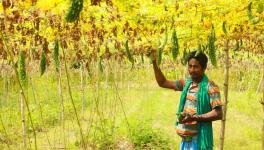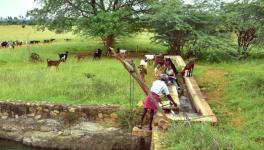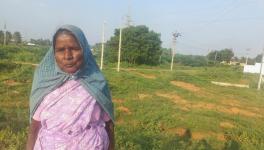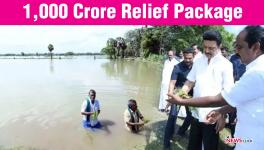Cyclone Burevi: Central Teams Visit Affected Areas, Residents Protest Govt. Indifference
Teams from the Centre have visited Tamil Nadu and Puducherry to customarily assess the damage after back-to-back cyclones, Nivar and Burevi. The inter-ministerial teams estimate the loss incurred due to the calamity, while the state government submits a detailed report of the damages caused and the necessary compensation required.
However, allegations of the Union Government sanctioning a very small percentage of what has been demanded, have persisted for the past several years. To add to this, the central teams, on most occasions, refrain from actually visiting the affected areas. Instead they visit stalls with posters and photographs of the damage done.
Irked by the continuous neglect, people from the areas affected by Cyclone Burevi greeted the central teams with slogans and expressed their anguish.
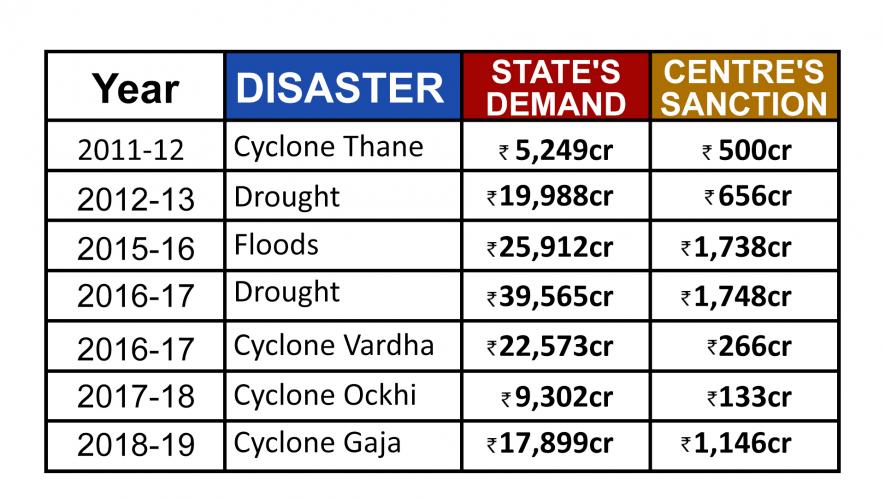
Cyclones, Droughts and Floods
The state of Tamil Nadu and the Union Territory of Puducherry have borne the brunt of several high-intensity cyclones and droughts over the past decade, with climate change being cited as the reason for the extreme weather events. Since 2011, the state has witnessed six cyclones, two droughts and a disastrous flood in Chennai.
Cyclones Thane (2011-12), Vardah (2016-17), Okhi (2017-18), Gaja (2018-19) caused irreparable damage while the last two months of 2020 also saw Nivar and Burevi, which caused extensive damage to a variety of crops and people. The two droughts in 2012-13 and 2016-17 also affected farmers to a great extent.
The Chennai floods in 2015-16 created havoc, as most parts of the city remained under water for weeks, leaving hundreds of thousands in relief camps.
The farming community suffers huge losses during both, floods and drought, while the common folk are also left with damaged property and unimaginable tragedy in their personal lives.
Loss and Compensation
During the event of a disaster, the state government assesses the damage and submits demands to the Centre. The damage to crops, houses, cattle and trees are estimated by the state government. Allegations of a lesser-than-required amount being sanctioned, and an even lesser amount being disbursed, have been around for long.
The state government has demanded a total of Rs 1,40,668 crores for relief and restoration work due to calamities till 2018-19. The amount sanctioned by the Union Government is only Rs 6,187 crores, less than five per cent of what has been demanded by the state government.
Though allegations of state governments exaggerating damages have been pointed out in reports, the sanctioned amount has been too low regardless. The vast difference between the figures has been used by the state government to criticise the Union Government of having an indifferent approach.
Protests Against Visit of Teams
The recent visits by central teams saw people directing their rage towards them for not visiting the affected areas. The central teams visited places where the district administration has put up photographs of the impact of the Cyclone Burevi. The two teams visited different affected districts in Tamil Nadu and Puducherry for less than two days.
Considering the widespread damage to crops, flooding in residential areas and damage to several fishing hamlets, the number of days allotted to the damage assessment has also been criticised by stakeholders.
The team refrained from visiting parts of Chennai where the water stagnation was reported for more than a week. In Cuddalore district, which received incessant rain due to Cyclone Burevi, farmers protested against the way the inspection was done. Paddy and sugarcane crops suffered extensive damage in the delta districts due to the cyclone after intense rainfall.
The farmers accused the central teams of conducting an investigation only to mollify them. The previous experiences of farmers availing compensation stand testimony to their allegations on the central team visits.
Though the government insisted on farmers insuring their crops, many crops, including sugarcane, are nor covered under the scheme. The compensation paid by the state government during Cyclone Gaja was nowhere close to the expectations of the farmers, with the government having paid only Rs 1,100 per coconut tree.
The farmers, who have been affected by the floods, cyclones and droughts, remain the most affected. Despite their tall claims, the union and state governments, have only failed them, repeatedly.
Get the latest reports & analysis with people's perspective on Protests, movements & deep analytical videos, discussions of the current affairs in your Telegram app. Subscribe to NewsClick's Telegram channel & get Real-Time updates on stories, as they get published on our website.












